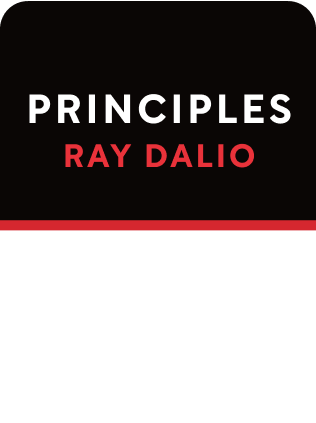

This article is an excerpt from the Shortform summary of "Principles: Life and Work" by Ray Dalio. Shortform has the world's best summaries of books you should be reading.
Like this article? Sign up for a free trial here .
What is the Bridgewater culture that helped the company thrive? Can you use aspects of this Bridgewater culture at your own company?
Bridgewater culture thrives on radical transparency and radical truth. Through these concepts, Bridgewater empowers employees and managers to make the best decisions and speak up when they think something isn’t working.
Read more about Bridgewater culture below.
Bridgewater Culture
In the 90s, Dalio’s lieutenants gave him feedback about how his openness makes them feel incompetent and humiliated and engenders toxicity. It seemed they could have one of two things: 1) be radically truthful and bring weaknesses to the surface, 2) have happy and satisfied employees.
He came to understand that people who weren’t as close to Ray didn’t know his principles and misinterpreted his directness.
This led Ray to put his management principles in writing, clarifying why radical transparency was critical to success, and providing a framework for resolving disagreements.
How Consequences Help Build a Good Company Culture
Every action has a direct “first-order” consequence, as well as longer-term second- and third-order consequences. Consequences are part of the Bridgewater culture.
For example, saving money has the first-order consequence of deducting money from your account that you can’t spend today. While this is painful, the second-order effect is better—you have more money saved for retirement. The third-order effect is even better still—with more money saved for retirement, you feel less stress about your career and might have more options for how you spend your time.
Think of the consequences as a series of dominoes, one triggering the other. Bridgewater associates culture relies on everyone understanding their consequences.
Some of the hardest habits to adopt have painful short-term first-order consequences but fantastic second- and third-order consequences. Don’t let short-term first-order consequences deter you from reaching the real goals.
As another example, physical fitness requires the painful first-order consequence of exercise, dieting, and self-restraint when eating. The second-order consequence is better health. The third-order consequence is greater happiness, self-confidence, and more. It’s worth enduring the shorter-term pain for the longer-term gain.
Inversely, some things that are bad for you long-term have very tempting first-order consequences. For example, smoking presents an immediate first-order reward, with dire long-term consequences.
From his evolutionary viewpoint, Dalio considers that nature may even be throwing us trick choices to punish people who make short-term decisions on first-order consequences alone.
Make Expected Value Calculations
When you have your options on the table, assess them for what gives you the highest expected value. This is part of what Bridgewater culture does.
The concept of expected value comes from statistics and involves multiplying the probability of an outcome by its value. For example, say an opportunity has a 20% chance of returning $1,000, or an 80% chance of failing and costing you $100. The expected value is 20% times $1,000 plus 80% times -$100, or $200 – $80, or $120. Here, the expected value is positive, so it’s probably a good bet, even though you have a majority chance of losing money. Bridgewater associates culture relies on statistics like this.
Dalio’s point here is to avoid rejecting an option simply because there’s something wrong with it. Many people shy away from options that have any possibility of downside, taking very safe options instead, even though the safe options don’t have the highest expected value. Decision-making is an important part of Bridewater culture.
Every option has a probability and reward for being right, and a probability and penalty for being wrong. Bridgewater associates culture proves this. The important thing is to figure out what those probabilities are, then choose the one that will give you the best return.
Here are a few important conclusions from this style of thinking:
- It’s OK to take a chance when the chances of success are low but the upside is very high, as long as the downside is low.
- Increasing the probability of being right is valuable. Raising your probability of being right from 50% to 83% means that a third of your bets will change from losers to winners.
- Be OK with not making bets. You’ll have a better track record if you only make bets that you’re very confident will work.
- Avoid people who reject options simply because they find anything wrong with it, rather than carefully weighing the pros and cons and expected value. These people tend to be poor decision-makers.
Consider Bridgewater culture when you are working on your own company culture, and how to achieve the things you want.

———End of Preview———
Like what you just read? Read the rest of the world's best summary of Ray Dalio's "Principles: Life and Work" at Shortform .
Here's what you'll find in our full Principles: Life and Work summary :
- How Ray Dalio lost it all on bad bets, then rebounded to build the world's largest hedge fund
- The 5-step process to getting anything you want out of life
- Why getting the best results means being relentlessly honest with everyone you work with






